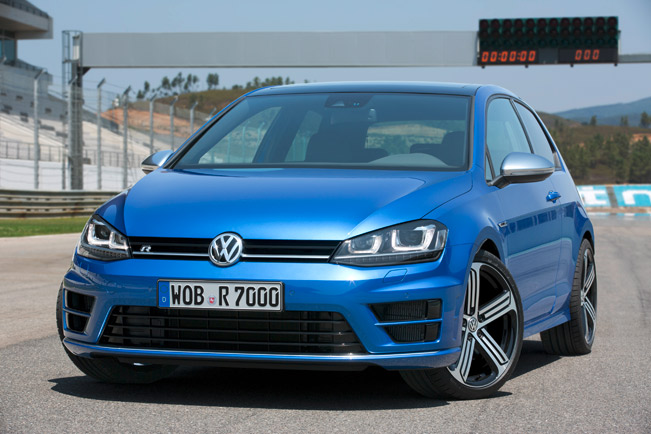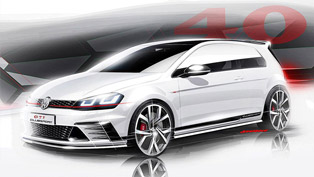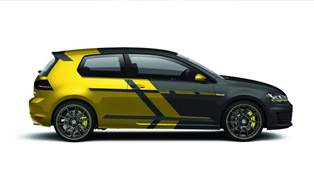US-Spec Volkswagen Golf R at NAIAS
 So, the NAIAS draws near and so do the good news. In our case, the latest Volkswagen Golf R: it's coming to the US market. There will be a preview at the show, but the actual sales won't happen until 2015. What's also interesting is that this US-spec R will be a tiny bit underpowered than its European counterpart.
So, the NAIAS draws near and so do the good news. In our case, the latest Volkswagen Golf R: it's coming to the US market. There will be a preview at the show, but the actual sales won't happen until 2015. What's also interesting is that this US-spec R will be a tiny bit underpowered than its European counterpart.
Still, it will be the most powerful Golf on the market, brandishing 290 hp and 280 pound-feet of torque. The source of that power is a GTI-sourced TSI 2.0 engine. However, in order to make it meet the needs of the R, engineers had to tweak quite a few bits. the cylinder head (together with exhaust valves, valve seats, and springs), pistons, high-pressure injection system, and turbocharger have all been modified or completely redesigned. As a result, the latest flagship Golf will be the most powerful to date with 34 hp more than the previous 2013 model. Volkswagen also hail the TSI in it as one of the most powerful four-cylinder engines in the world ("one of the" being key here).
Mated to a manual six speed gear, it can propell the Golf R to 60 mph from a standstill in 5.3 seconds. Go for the DSG dual-clutch automatic and that number drops to 4.9 seconds. The same ratio is true for the combined fuel consumption. 33 mpg (manual) and 28 mpg (DSG).
The power transferred from the engine to the wheels goes through Volkswagen's 4MOTION permanent all-wheel-drive system. Apparently not so permanent these days since a clever Haldex 5 coupling unit uses an electro-hydraulic oil pump to continuously alter the torque distribution. Under relatively light loads, the R can go all day with all the power going to the front wheels. When necessary, 100 percent of the torque can also be directed to the rear wheels. Flamboyant cornering should cause no sweats thanks to an XDS+ cross differential lock operates on both axles. The bravest of the brave can even completely switch off the electronic stability control, thus indulging in the car's purest mode of driving.
An extra option that can come along with the R is the DCC dynamic chassis control – a state of the art software-operated system that has us confused with its many modes and settings. The gist of it, though, is the independent regulation of the damper rebound and compression on each wheel. The process is fast, adaptive and rather autonomous.
In terms of visuals, you will recognize a Golf R – granted you miss the R badges – by it's lower stance (0.8 inches lower than any other regular golf and 0.2 inches lower than the GTI). The brake disks are also quite noticeable at a diameter of 13.4 inches at the front and 12.2-inches at the rear wheels. Distinctive body parts: the bumpers, side skirts, the rear diffuser, and two dual exhaust tips in chrome. The headlights (Bi-Xenon) get complemented by "U"-designed LED daytime running lights whatever that means. 18-inch "Cadiz" aluminum-alloy wheels shod with 225/40 tires complete the picture.
Source: Volkswagen

















